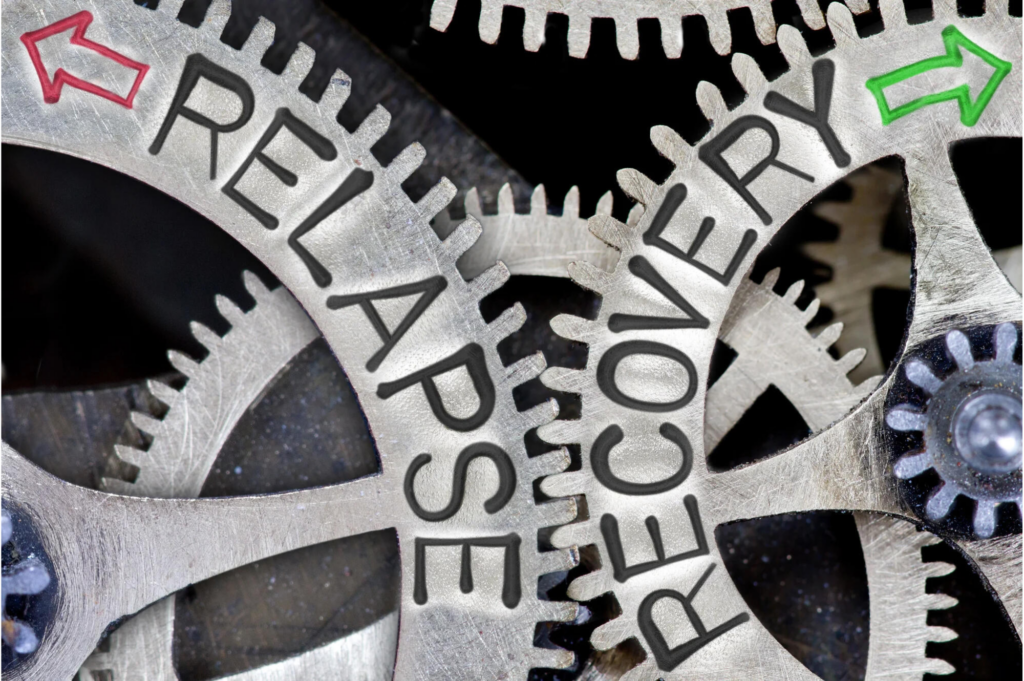Stimulant Addiction Treatment: Relapse Prevention Tools for Patients
The right outpatient programs for stimulant addiction treatment help patients adjust to their lives outside of rehab, and prevent relapse.
Embracing a life free from drug abuse is undeniably one of the most significant choices you can make. Although the journey toward sobriety may present challenges, it is a very rewarding path that leads to positive transformation and a brighter future.
As your body adjusts to life without the drug, you might encounter withdrawal symptoms and the temptation to return to old habits. In these moments, holding onto your determination to embrace a drug-free lifestyle becomes paramount.
This is where stimulant addiction treatment comes into play. Rather than rely on willpower alone, it helps you understand the disease aspect of substance abuse, create healthy boundaries, and develop effective coping skills.
So, if you’re looking for tips to stay sober, keep reading. This article will explore relapse prevention in detail, exploring various outpatient treatment strategies that will help you avoid relapsing.
Relapse Risk Factors and Common Triggers
When it comes to addiction and overcoming it, the brain plays a key role. This is because, during the addiction period, certain elements are associated with drug or alcohol consumption. These may include people, places, and objects.
Anytime you are exposed to these elements, memories of substance use may resurface which can bring on strong cravings and reinforce the desire to engage in addictive behaviors. Therefore, in your efforts to overcome addiction, one of the most important steps is understanding risk factors.
While these external factors are likely to be present in your day-to-day life, they’re easy to identify and manage. However, that’s not the case with internal triggers. It’s more challenging to detect and address them since they’re largely influenced by your emotional state or thought patterns.
For instance, when you’re feeling bored, lonely, or isolated, the urge to relapse will be very strong. You can navigate this by building a supportive social network and engaging in meaningful activities.
Another notable trigger you should be aware of is withdrawal symptoms. During the early stages of detox, when symptoms are intense, relapsing will feel like the only way to ease them. However, you should stand firm on your commitment to staying sober.
All these relapsing triggers can become even more challenging if you also have a mental health disorder. Conditions such as anxiety and depression can exacerbate emotional distress, which can provoke relapse.
Types and Stages of Relapse
Relapse can manifest in various forms, each with distinct characteristics and implications. A “traditional” relapse typically involves a conscious decision to consume drugs or alcohol, often as a means of coping with stress or social situations.
Conversely, a “freelapse” occurs inadvertently, where substance use is unintentional, such as mistakenly consuming alcohol assuming it to be non-alcoholic.
Relapse may not always occur abruptly. Rather, it can evolve gradually through distinct stages as follows:
- The emotional relapse stage: Precedes physical substance use and is marked by emotional turmoil and ineffective coping mechanisms
- Mental relapse stage: Experiences with conflicting desires between sobriety and cravings (accompanied by romanticized notions of past substance use)
- Physical relapse stage: Culminates in the actual consumption of drugs or alcohol, signifying a loss of control
As you can see, relapse is a gradual process. This is why recognizing and addressing the warning signs at each stage is crucial in preventing relapse and maintaining long-term sobriety.
Tips for Preventing Relapse
Now that you know how to identify triggers, it’s time to learn some coping mechanisms taught in outpatient treatment. Here are the top tips to stay sober:
1. Recognizing and Addressing HALT Triggers
When it comes to relapse prevention, the acronym HALT is one of the most powerful tools you can use. It stands for hungry, angry, lonely, and tired. These are common relapse triggers.
Any time you feel cravings for substance use, do a HALT assessment to pinpoint underlying triggers. Doing so helps you recognize how these triggers influence your emotional and mental stage. Once you identify the cause, you can address it to resolve the unwanted cravings.
Whether it’s nourishing the body with a balanced meal, seeking support to manage anger, connecting with loved ones to alleviate loneliness, or prioritizing rest and self-care, addressing HALT triggers empowers you to maintain emotional well-being and stay on course toward recovery.
2. Understanding Your Triggers
Relapse triggers can vary significantly from one person to the next. As you start your journey towards sobriety, it’s important to understand your triggers. Each time you feel like relapsing, quickly identify the cause and keep a record.
With time, you’ll notice common triggers. As you become more aware of these triggers, you can start taking proactive measures to avoid them. If that’s not an option, prepare yourself psychologically for the challenge and develop coping mechanisms.
3. Use the 5-4-3-2-1 Technique
Among the prevalent triggers for relapse, stress, and anxiety loom large, especially during early recovery stages. One invaluable tool for managing anxiety is the 5-4-3-2-1 technique.
This grounding exercise engages all five senses to anchor you in the present moment. It helps to divert attention from anxious thoughts or cravings.
The method involves a sequence of steps, starting with a few deep breaths, followed by:
- Observing five things in your surroundings
- Touching four objects within reach
- Listening to 3 sounds in your environment
- Noticing two distinct smells nearby
- Recognizing one taste sensation
As you finish, take another deep breath to foster mindfulness, self-awareness, and a sense of control, thereby reducing overwhelming feelings and bolstering resilience against relapse triggers.
4. Mindfulness Meditation
Mindfulness meditation is a practice that helps you become more self-aware, which allows you to identify triggers as they come. This meditation technique encourages you to learn how to accept your triggers and cravings rather than fighting them.
After you accept that cravings occur, you will be in a better position to implement relapse prevention skills, such as letting go of personal control and the use of prayer or meditation.
The goal of mindfulness is to teach you to pay attention, focus on what you’re doing, where you are, who you’re with, and more. In other words, it teaches you to be in the moment. This can prevent you from worrying about the past or future and keep you in the present, leading to tremendous insight and empowerment over cravings.
5. Join Support Groups
By nature, humans are social beings that come together, especially during difficult times. This is why engaging support groups such as Alcoholics Anonymous or SMART Recovery is integral for relapse prevention.
Regular participation in these groups offers invaluable support, accountability, and education while fostering connections with individuals facing similar challenges. But that’s not all. Attending support groups will deter relapse by alleviating feelings of loneliness, isolation, and hopelessness, all of which commonly precipitate cravings.
By fostering a sense of community and solidarity, support groups provide individuals with the encouragement and understanding needed to navigate the complexities of addiction recovery and maintain long-term sobriety.
6. Deep Breathing Techniques
Breathing, fundamental to existence, holds immense power over your well-being. While often overlooked, intentional focus on breathing yields profound physical, emotional, and mental advantages.
So, anytime you feel overwhelmed by cravings, take a long deep breath. As you do so, you’ll stimulate neurotransmitter release, fostering feelings of relaxation, contentment, and discomfort alleviation.
If you can master breath control through deep breathing exercises, you’ll develop the power to manage stress, anxiety, anger, and fear effectively. In turn, this self-regulatory skill will serve as a formidable barrier against relapse, offering a pathway to emotional resilience and sustained recovery.
7. Utilize the “Play the Tape Through” Technique
One of the worst parts of relapsing is the feelings of guilt, regret, and failure that come after succumbing to cravings. Rather than go through this, why not use it as fuel to stay clean?
This is what the “Play the Tape Through” technique is all about. Whenever you face the urge to use drugs or alcohol, visualize the short and long-term consequences. Bringing the potential ramifications into your consciousness helps you empower yourself to resist.
8. Keep Yourself Busy
In fairness, quitting drugs and substance abuse after addiction is not easy. While staying away from triggers and such substances is essential, the process will be much easier if you can keep the drug off your mind.
It’s helpful to minimize opportunities for cravings and idle time by engaging in productive activities. Whether pursuing hobbies, learning, or volunteering, staying occupied fosters a sense of purpose and fulfillment, reducing the likelihood of giving in to urges.
Keeping busy also promotes healthy habits and routines essential to maintaining sobriety. By filling leisure time with meaningful activities, you’ll cultivate resilience against relapse triggers.
9. Involve Family and Friends
As mentioned, the journey toward staying sober is much easier when you have a strong support system. When it comes to such support, there are no better people to have by your side than friends and family.
Beyond wanting to see you overcome your addiction, they’ll be happy to assist. Whether it’s through checking on you, offering encouragement, or keeping you accountable, a strong support network will help you achieve the benefits of sobriety.
That being said, you still have a part to play, which involves communicating openly with them. From the small wins you’ll achieve to the challenges you’ll face, keep them involved and informed so they’ll know how best to support you.
10. Create an Emergency Contact List
While you hope for a fast and smooth journey toward stopping drug abuse, you have to prepare for unprecedented scenarios. The first step in doing so is creating an emergency contact list. Compile a list of trusted individuals, such as family members, friends, sponsors, or mental health professionals, whom you can contact during distress or temptation.
Having readily accessible support can provide reassurance and guidance in moments of vulnerability and serve as a vital lifeline in maintaining sobriety. Ensure that your emergency contact list is easily accessible, whether stored in your phone, written down in a journal, or posted in a visible location, to access assistance when needed swiftly.
Exploring Post-Relapse Treatment Options
In addition to the conventional treatment avenues like detox, inpatient, and intensive outpatient programs, several other options can be considered following a relapse. Here are a few examples:
Behavioral Therapies
Behavioral therapies, notably cognitive behavioral therapy (CBT), offer crucial tools for preventing future relapses. By targeting unhealthy beliefs about substance use and providing coping skills for managing stress, cravings, and triggers, these therapies empower you to navigate recovery with resilience.
Increased Personal Therapy
Increasing the frequency of individual therapy sessions following a relapse can offer deeper insight into the underlying factors contributing to the relapse. Frequent sessions allow you to explore reasons behind the relapse, develop effective coping strategies, and address any emotional or psychological challenges hindering their recovery progress.
Couples and Family Therapy
Couples and family therapy sessions provide an opportunity to address the impact of the relapse on relationships and strengthen support networks. These sessions facilitate open communication, foster understanding, and equip family members with tools to support their loved one’s continued recovery journey.
Relapse Prevention Classes or Groups
Attending relapse prevention classes or groups will equip you with practical skills for managing triggers, cravings, and stress over the long term. These sessions provide tailored strategies and a supportive environment to help you learn from your experiences and develop effective relapse-prevention techniques.
Increased Self-Help Meetings
Attending self-help meetings, such as 12-step or SMART Recovery, more frequently post-relapse can offer additional support and encouragement. Meetings like these provide a safe and non-judgmental space for individuals to share their experiences, receive guidance, and strengthen their commitment to sobriety.
Increased Self-Care
Prioritizing self-care post-relapse is essential for maintaining overall well-being and resilience. Engaging in activities like meditation, exercise, nutrition, and positive leisure pursuits helps individuals cope with stressors and cultivate a healthy lifestyle conducive to long-term sobriety.
Get Personalized Stimulant Addiction Treatment
Relapse prevention is a complex process that requires proactive measures and a commitment to self-care. Implementing a combination of strategies such as mindfulness, support group participation, and healthy coping mechanisms helps you navigate the challenges of recovery with resilience and determination. This paves the way for lasting sobriety.
But it’s also important to have the right people to guide you. At New Life Recovery in Montville, New Jersey, we offer personalized stimulant addiction treatment. Contact us today to get expert care and guidance to help you achieve an addiction-free life.




